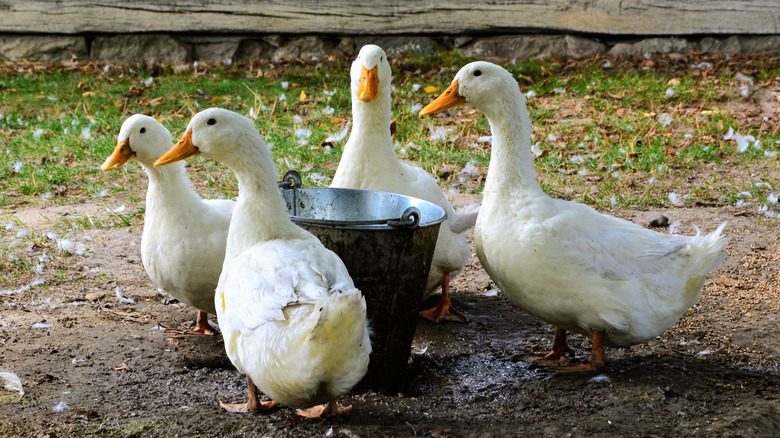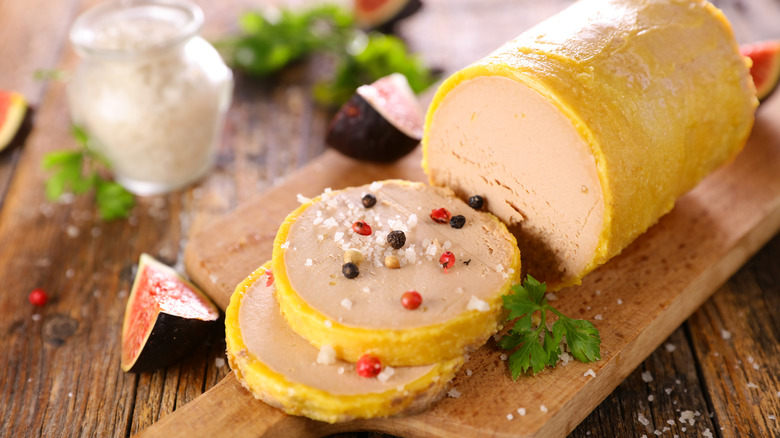The Controversial Victory Scored By New York Duck Farmers
Foie gras is an iconic and divisive French delicacy: it is a fattened duck or goose liver pâté traditionally served during Christmas feasts as a starter on warm toast alongside onion or fig jam or chutney, France24 reports. Some shy away from the pâté because of how it's made, as ducks are often force-fed through a process called gavage, though the dish remains fairly popular amongst the French. Supermarket shelves are stocked with foie gras leading up to the holiday season and France remains a major producer of foie gras, despite a shortage caused by a bird flu epidemic this past May (per CNN). However, outside of France, there is even more controversy surrounding the ethics of how the fatty, rich, and decadent taste of foie gras is achieved.
Currently, 90% of foie gras is produced in Europe, and the other countries that make the delicacy are the United States, Canada, and China, according to Euro Foie Gras. Yet foie gras production is banned in a whopping 15 countries — Argentina, Czech Republic, Denmark, Finland, Germany, Ireland, Israel, Italy, Luxembourg, the Netherlands, Norway, Poland, Sweden, Switzerland, and the UK — with a total ban on sale and production in India, per Fine Dining Lovers. Then back in 2019, the New York City Council passed a legislation that would ban the sale of foie gras in the city starting in 2022, The New York Times reports.
A temporary victory for foie gras lovers
Despite the fact that foie gras will be outlawed locally on November 25, New York City restaurants will still be able to serve the dish due to a recent ruling by the Supreme Court of New York, which decided to suspend enforcement of said law until a challenge on the ban's constitutionality is determined, reports Restaurants Business Online. The suit against the law was filed by foie gras producers, stating that the ban was in violation of a law that prohibits urban areas from dictating what farmers in the agricultural areas of New York can and cannot cultivate.
Many restaurateurs, fine-dining customers, producers, and low-wage immigrant laborers have a stake in this legal battle, according to one New York Times 2020 investigation into the upstate Sullivan County foie gras economy. Nearly all of the U.S.-produced foie gras comes from two duck farms of this region, and 400 laborers, largely from Mexico and Central America, depend on these jobs to live. The Catskills Foie Gras Collective states that "Foie gras is produced by humane farming practices and provides jobs for hundreds of families in New York State. Scientific studies and analysis by veterinarians have shown that ducks and geese raised for foie gras are not harmed or stressed by the practice." For now, foie gras is here to stay, but only time will tell whether or not the ban will hold in the future.

